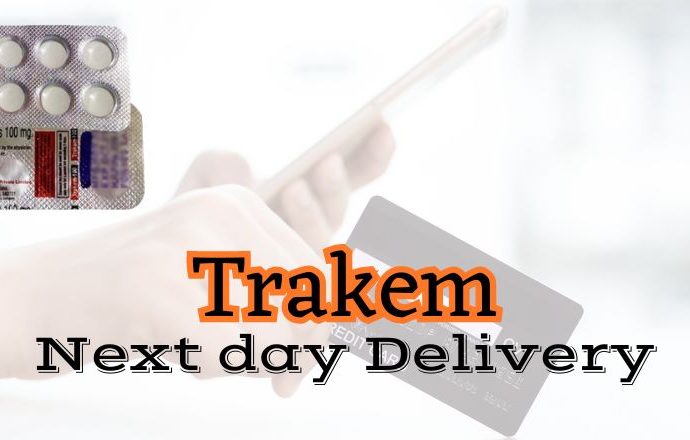Whenever you experience pain, it is all because of the nervous system. Your body nervous system carries the pain signals from your body part and delivers the message to the brain.
You usually experience pain in your body due to injury, tissue injury, or worn out bones. It is often caused to prevent any other harm.
Everybody has different ways of responding to the pain. In certain circumstances, this variety makes it difficult to describe and treat pain.
Pain can be acute or chronic, localized or dispersed across the body. Taking the right pain relief medicines became very important at that time because it can affect your body and lifestyle.
Causes of Pain
There are several sources of pain, but the primary cause is nociceptive pain. It results from tissue damage. Most pain, especially severe pain, is nociceptive in nature.
Neuropathic pain is caused by injury or malfunction of the central neurological system (brain or spinal cord) or the peripheral nervous system (nerves outside the brain and spine). It might occur when:
- A tumor or a damaged disk in the spine puts pressure on a particular nerve, resulting in low back discomfort and/or pain spreading down the leg. Carpal tunnel syndrome can result from pressure on a nerve in the wrist.
- Brain nerves damaged by diabetes. Symptoms include numbness, tingling, and discomfort in the toes, feet, and even the hands.
- In postherpetic neuralgia, the region where the rash originally appeared becomes painful and sensitive to touch.
The types of pain that are acute or chronic pain can be neuropathic, nociceptive, or both. Chronic low back pain and the majority of cancer pain are generated mostly by continual activation of pain receptors (nociceptive pain). However, in some conditions, pain can also be caused by nerve injury.
| Category | Types | Description |
|---|---|---|
| Acute Pain |
|
|
| Chronic Pain |
|
It can be caused due to arthritis, or intermittent, as with a migraine episode. |
| Describing Pain |
|
Acute Pain
This form of pain is typically severe and short-lived. It is the body’s way of alerting you to an injury or localized tissue damage. Treating the underlying damage generally alleviates acute discomfort.
Acute pain activates the body’s fight-or-flight reaction, which generally leads to quicker heartbeats and respiration rates.
There are several forms of acute pain:
- Somatic pain is a type of superficial discomfort that occurs on the skin or in the soft tissues underneath the skin.
- Visceral pain is discomfort that arises in the body’s interior organs and cavity linings.
- Referred pain occurs when a person feels visceral discomfort in a region other than the site of tissue injury.
Chronic Pain
This sort of pain lasts far longer than acute pain, and there is usually no solution. Chronic pain may be minor or severe. It can either be chronic, as in arthritis, or intermittent, like a migraine attack. Intermittent discomfort happens several times but subsides in between outbursts.
People with chronic pain gradually stop having fight-or-flight reactions when their sympathetic nervous system adapts to the pain input.
If there are enough occurrences of acute pain, they can accumulate electrical impulses in the central nervous system (CNS), overstimulating the nerve fibers.
Describing Pain
Describing pain occurs in a specialized part of the body, it can cause pain in that part due to injury or nerve injury. The describing pain can be classified into three categories.
- Neuropathic pain results from damage to the peripheral nerves. It may feel like electric shocks or produce soreness, numbness, tingling, or pain.
- Phantom pain develops following amputation of a limb. It describes unpleasant feelings that appear to originate from the missing limb.
- Central discomfort is commonly caused by myocardial infarction, abscesses, or bleeding in the brain and spinal cord. Central discomfort persists, ranging from moderate to quite severe. People who have central discomfort describe burning, aching, and pressing feelings.
Medicines For Chronic Pain
Non Opioid Pain Relievers
There is a huge variety of non-opioid medicines. They are frequently beneficial for mild to moderate pain, and occasionally for severe pain. These medicines are frequently used to manage pain. People do not develop physical dependence or tolerance to these medications’ pain-relieving properties.
You can also get Aspirin and acetaminophen without a prescription (OTC). Several alternative nonopioid analgesics (such as ibuprofen, ketoprofen, and naproxen) are accessible over-the-counter, although greater dosages may require a prescription.
NSAIDs
Many of the most popular non opioid pain medications are classed as nonsteroidal anti-inflammatory medicines (NSAIDs). Examples include ibuprofen, naproxen, and aspirin. NSAIDs is used to manage mild to severe pain. NSAIDs not only alleviate pain, but they may also decrease inflammation, which frequently accompanies and exacerbates pain.
NSAIDs are commonly taken by mouth. Some NSAIDs, including ketorolac, diclofenac, and ibuprofen, can also be administered intravenously or intramuscularly. Indomethacin can be administered as a rectal suppository. Diclofenac is also sold as a cream.
Aspirin
Aspirin (acetylsalicylic acid) is one of the oldest drugs and has been used for around 100 years. Aspirin is used orally and gives 4 to 6 hours of moderate pain relief.
Because aspirin can irritate the stomach, it can be mixed with an antacid (known as buffered) or coated to travel swiftly through the stomach and dissolve as it reaches the small intestine (known as enteric coated).
Acetaminophen
Acetaminophen has about the same pain-relieving and fever-lowering properties as aspirin. However, unlike NSAIDs, acetaminophen possesses the following characteristics:
- Has almost no beneficial anti-inflammatory action.
- Does not impact the blood’s capacity to clot.
- Has nearly minimal side effects on the stomach.
Acetaminophen is given orally or by a suppository. Acetaminophen is usually taken by mouth or sometimes can be put into the rectum.
Opioid Pain Relievers
Opioids, sometimes known as analgesics, are beneficial for a wide range of pain conditions. Opioids are chemically similar to morphine, a natural drug derived from poppies. Some opioids are derived from other plants, while others are created in a laboratory.
Opioids are frequently provided for a few days to treat severe pain that is expected to subside rapidly (such as pain from an injury or surgery). Doctors frequently transition clients to non opioid pain medicines as quickly as feasible since opioids have negative effects and can be misused or addictive.
Antidepressants
Even in the absence of depression, antidepressants can typically ease pain. Tricyclic antidepressants (such as amitriptyline, nortriptyline, and desipramine) can be very effective for this purpose (SNRIs, including duloxetine, venlafaxine, and milnacipran), may have fewer side effects that limit how much of the drug can be taken.
Anti Seizure Medications
Anti-seizure medications may be used to treat neuropathic pain. Gabapentin and pregabalin are popular, but many other medications, such as carbamazepine, clonazepam, lacosamide, lamotrigine, oxcarbazepine, phenytoin, topiramate, and zonisamide, can assist some patients with pain.
Gabap
entin can be used to treat pain caused by shingles (postherpetic neuralgia) and other kinds of neuropathic pain.
Pregabalin is used to treat fibromyalgia, diabetes-related nerve damage (diabetic neuropathy), postherpetic neuralgia, and neuropathic pain caused by a disease in the brain or spinal cord.
Non-Drug Medications
Cold or warm compresses applied immediately to a sore region are typically effective (see Treatment of Pain and Inflammation).
Neuromodulation techniques employ electric stimulation to alter how nerves process pain. The techniques include the following:
- Transcutaneous electrical nerve stimulation (TENS)
- Spinal Cord Stimulation
- Peripheral nerve stimulation
Chronic pain can be relieved with physical or occupational therapy, which can also improve function. Exercise or raising one’s level of activity might be beneficial at times. For example, walking on a regular basis can help reduce lower back pain more efficiently than lying in bed.
Biofeedback and other cognitive treatments (such as relaxation training, hypnosis, and distraction techniques) can help people manage, lessen, or cope with pain by altering their attention patterns. When people are in pain, one distraction strategy is to envision oneself in a tranquil, pleasant setting (such as a hammock or on a beach).
Cognitive behavioral therapy has the potential to alleviate pain and handicap while also assisting people in coping. This sort of treatment includes counseling to assist people in coping with pain rather than its consequences and limits. Counseling may be used to assist people and their families handle pain jointly.
Get Next day Delivery of Medicines from Painmeds365
Get next day delivery of pain relief tablets from Painmeds365 at the best prices. Painmeds365 provides next day delivery to our customers. We understand your needs. That is why they come with the fastest delivery in the USA. We have safe and original medicines. Painmeds365 provides a 24 hour support system to their customers.
We have best experts in the industries that understand your concerns and suggest you best medication for your health. You can buy pain relief tablets, anxiety tablets, sleeping pills and any other medication from Painmeds365 website. Place your order on Painmeds365 and get super fast delivery.











